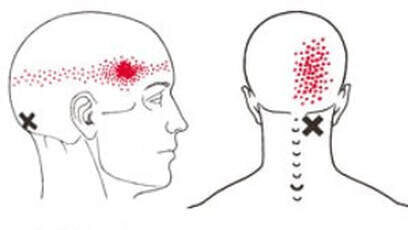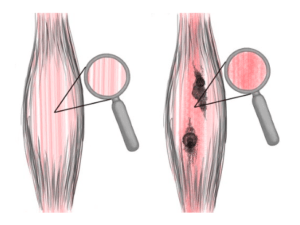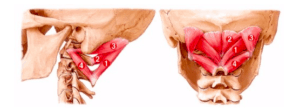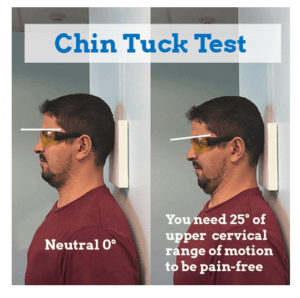
05 Apr The Last Blog Post You’ll Ever Need to Read to Get Rid of Your Stress and Tension Headaches
BY: Dr. Joe Mograbi, DC
Are you 1 of the 1.9 Billion – YES, Billion with a B – people who suffer from chronic stress and tension headaches?
If you answered:
Yes!
… then you have found the last blog you will ever need to read about stress and tension headaches.
The Mayo-Clinic defines tension headaches as “diffuse, mild to moderate pain in your head that’s often described as feeling like a tight band around your head,” and even admits that “a tension headache is the most common type of headache, and yet its causes aren’t well-understood.”
So even the mayo-clinic does not fully understand what is causing these stress and tension headaches.
We can go to other sites like WebMD, and they will give you a short term solution on what you can do for temporary relief such as:
- relax in a dark room
- remove alcohol from your diet
- apply a cool compress on head
- deep/slow breaths
- massage at base of skull
- warm shower
- take an over the counter pain medication
SO, these may help WHILE you have a headache, but again no one is talking about why we are getting these headaches.
Wouldn’t it be helpful to PREVENT a stress and tension headache from ever happening again?
It seems like everywhere you go, the information seems to just be about what to do when you get them, and there seems to be little to nothing on exactly why you get stress and tension headaches.
What if I told you there is a physical root cause of these headaches, other than “stress” that no one is talking about?
What if I told you it’s easily fixable by a properly trained physician?
If you’re like most people, I bet you’re saying something like:
YEH RIGHT!
Who is this guy making a claim like that?
It’s not on webMD, you’re just talking nonsense.”
Well, let’s get into it…..
A Secret PROBLEM Causing Your Stress and Tension Headache
Have you ever heard of fibrous adhesion?
Say what?
Fibrous Adhesion (aka. fuzz, glue, scar tissue, or fascial adhesion) is not only the most common pathology in the human body, BUT it is also the most undiagnosed (making it a secret to most chronic pain sufferers) and most reversible condition in the human body.
Adhesion acts as glue that builds up in and around your muscles.
As the adhesion forms, it acts as “glue,” decreasing the muscles strength (load capacity) and ability to stretch and move the way it should.
Adhesion can also stick to nerves causing those nerves to not be able to glide and move in the muscles like they should, which will cause nerve symptoms, and most people completely ignore the role that adhesion plays in both muscle and nerve health.
Here’s a quick video with a magnificent demonstration of how adhesion transforms the capacity of muscle tissue:
Some of you may be thinking:
So, is this adhesion stuff just a fancy way of saying you have a muscle knot?
… NOPE GUESS AGAIN! A muscle knot is ropy and many times painful and tender to the touch. Knots feel like a small bundle of rope all bound up together.
The texture of a muscle knot is something anyone can feel.
Try it yourself right now!
Rub the back of your neck, or anywhere that you know you’re usually tender, and feel for a ropy bundle of muscle?
Do you feel it?
It’s kinda bumpy like rubbing your fingers over a speed bump.
Push on it… it often feels good to apply some pressure to it, sometimes it doesn’t.
Interestingly, that’s why massages feel good for 24-48hrs after; they’re rubbing on your knots and releasing them, but what they’re not doing is treating the adhesion!
If you want to imagine what knots look like, think of a bundle of cooked spaghetti when you forgot to add oil to the pot.
Adhesion on the other hand is not ropy. Adhesions feel leathery and dense. Think of trying to push your thumb through a well-done steak.
Adhesions do not have clear boundaries, no speed bump, and are harder to perceive… you might be thinking:
Ok that’s something a little different, I never heard of. How do I get adhesion?
The main causes for adhesion formation is are micro-traumas caused by repetitive motions, doing the same motion over and over and over OR an injury to an area, in this case, whiplash from a car accident, or head trauma from sports. The body senses the injury and repairs the injury with adhesion.
The Massive IMPACT of Adhesion, TREATMENT, AND TESTING!!
So, now we know what adhesion is, how it affects our muscles, and how it’s formed in the body.
When we talk about tension headaches, adhesion builds up in our 4 suboccipital muscles:
- Rectus Capitis Posterior Major (1)
- Rectus Capitis Posterior Minor (2)
- Obliquus Capitis Superior (3)
- Obliquus Capitis Inferior (4)
Treating adhesion in these muscles is not as simple as just applying pressure to them or rubbing on them to remove adhesion. It takes pressure and TENSION (if you’ll remember you high school physics class, a tension force is like pulling a rubber band apart) to break it up.
Unless you are having both PRESSURE and Tension applied to your adhesion, your pain will come back.
This is why after a massage your pain comes back after 24-48hrs; the massage therapist may have treated and relieved the knot, which is just a bound up area of muscle, but the sticky stuff, the ROOT CAUSE of your problem, is still there.
The adhesion is still in your muscle, and your muscle is unhealthy because of it. Check out what adhesion removal looks like below.
Is this starting to make sense?
We have this adhesion that has built up over time in the upper cervical spine, and it’s now limiting the muscles from lengthening properly.
Tension in these muscles PLUS the added stresses of life will result in chronic headaches.
Adhesion is the root cause most of the time. The stress and tension will only magnify the sensation and symptoms and will lead to your stress tension headaches.
You have seen how we remove the adhesion, but you may be asking now:
How do I know I have adhesion?
There’s a simple self assessment that you can do, and it’s called the Chin Tuck Test or Upper Cervical Flexion test. The goal of this test is to see how much mobility you have in your suboccipital muscles.
“Normal” range is 25 degrees without any symptoms.
If you feel a pulling/tightness/ stress anywhere, or this movement is not easy for you to do, that means you FAIL the test and there is adhesion present in your suboccipital musculature even if you get to the 25 degree mark.
In other words, you need to have the full 25 degrees PLUS be symptom free in order to know that there is nothing there, and PASS the test.. If both of those don’t meet this standard, that means there’s some gunk there.
Let’s come back to you:
- You suffer from tension headaches
- you have tried everything under the sun to help you with them
- you just tried the Chin Tuck Test and failed
- you saw how we remove adhesion.
Imagine you found an adhesion removal specialist and your stress and tension headache has almost completely gone away like it did for our patient Colleen.
Now, the adhesion in your muscles is gone.
How do you make sure that it does not come back? Here are 5 Ways to Prevent Adhesion from Coming Back!
This is the hardest question to answer.
Generally, if you have any level of degeneration, you will get adhesion back because adhesion is a protective response by your body to something that’s wrong.
So, the question then becomes about how to slow it down, or how to minimize the amount that comes back.
And the answer to this is about your lifestyle, diet (we recommend Chris Kresser’s Paleo Elimination diet from his book “Personal Paleo Code”), and how well those structures are strengthened so that nothing is compensating for something else and causing overuse.
We have a neck specific stretching and exercise rehab program to strengthen your muscles and to continue to maintain your range of motion after the adhesion is removed.
Here is an example of one of the exercises we prescribe in the program. It’s called quadruped chin tucks.
Now you know about adhesion and how it’s causing your chronic tension and stress headaches!
You know the reason why you are getting these headaches; you know why traditional care has not helped; you know how to assess yourself at home; you know what treatment looks like and how to prevent adhesion from coming back.
Now, the question is: what’s stopping you from giving us a call and finally solving your tension headaches once and for all?
If you think you might be a candidate for the PERMANENT pain relief we offer at Barefoot Rehab, give us a call at 862-205-4847 to speak with one of our patient advocates and take the next steps and see if you qualify!





Zee Arif
Posted at 13:26h, 22 MayHello my mother is suffering from chronic tension headache Back of head going into neck. But i am in uk based so how can you help us
Dr. Chris
Posted at 12:44h, 30 MayHi Zee, obviously we wouldn’t be able to help with adhesion treatment. Let me ask you, is she a happy person? If she has emotional roots or is in a state of chronic stress, then we might be able to help. We’ve been Beta testing a global problem for chronic low back and neck pain the past 2 months with great results!
Dr. Chris
Posted at 12:42h, 30 MayHi Zee, sorry to hear this. Obviouosly, we wouldn’t be able to help with adhesion treatment. But we can help her to the extent there are emotional and stress roots. What do you think her primary cause of her tension headaches is?
Farah amjad
Posted at 10:19h, 16 JulyHy im from Pakistan im. A university student i don’t why butt i have. Losta of pain in back of my neck and heck eveen theeth nose and face soo i read your therapy and know that it js tention headche im also a sports person plz help me to find out a way i want to realf this pain plz recommend some videos and some youga posies that help me ti to take out in this pain
Dr. Chris
Posted at 13:18h, 05 AugustHi Farah, it’s really hard to help without doing an exam, we can cause you harm without knowing. I recommend trying a paleo strict diet to see if inflammation is playing a role. Try to find a good myofascial therapist and see if they can work the tissue under the skull.
Babalwa
Posted at 02:09h, 11 OctoberHi am experiencing electrical shock at the back of my head and tension headache that leaded to vertigo for month now help please
Dr. Chris
Posted at 14:41h, 23 OctoberSounds like either a greater, lesser, or 3rd occipital nerve entrapment. Can you get to New Jersey so we can treat the adhesions there?
Maggie Lim
Posted at 08:36h, 09 NovemberHey there,
What a great article! I’m a physiotherapist from Malaysia. Truly found this insightful as I myself suffer from tension headaches. This article explains everything so well. It wiill definitely help me in treating my patients with tension headaches. But first, let me get myself treated! Thank you for this.